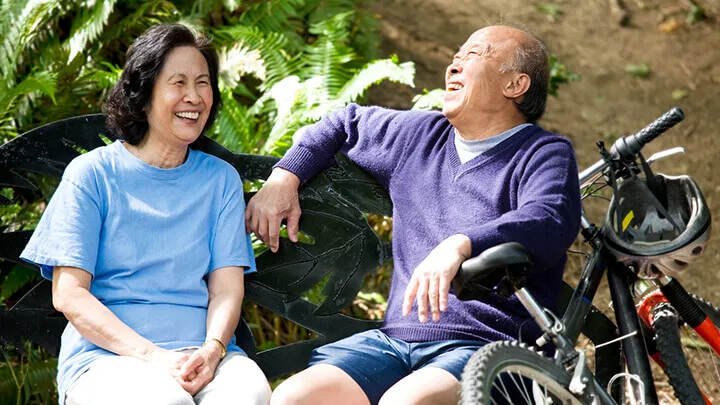My partner and I rarely give each other gifts, and we rarely take photos together. We enjoy giving each other something meaningful on our birthdays, and something silly at the end of the year, but that’s it. And our photo taking tends to focus more on the incredible, and sometimes sad or strange world around us, rather than on ourselves.
For many couples (or really, any friends or family who feel love for each other) gift giving is a big part of communicating love, and photos too. But as we’re all very diverse (in terms of our sexuality, our personalities, our hopes and hobbies), it makes sense that there isn’t just one single way to express love within a relationship. In my own case, I grew up without a lot of gift giving, as my family couldn’t afford it, and I also grew up resenting consumerism and that kind of communication. So for me, spending time together is a more significant language.
Gary Chapman defined five key languages of love, which we’ll look into below. Most people employ a combination of these, though Chapman argues that people almost always have one primary and one secondary love language.
1. Words of affirmation
This is saying things like “I love you,” or complimenting and praising your partner. For some people, uttering these words is loaded with significance, but for other people, saying these things can be secondary to the type of time spent together. Likewise, people who predominantly use this language to communicate love need to hear the words. They tend to find it hard to move on from insults and tend to need compliments — and no, that doesn’t imply vanity. Complements can be anything from you “You did well today” to “I love the way you think.”
2. Quality time

This is spending time together. As my partner and I discussed, it doesn’t mean being in the same house together, or even necessarily visiting friends together. Quality time involves one-on-one time. In our case, it means long-lasting, fascinating discussions about the news, life, philosophy or stupid contraptions sold online.
People who communicate love in this language may get upset if their partner cancels on them (especially when it’s constant) or is always rescheduling dates, prefers computer games to hanging out with them, or fails to listen.
3. Gifts
As mentioned, many people communicate their feelings with tokens of appreciation. Though I shirk this method of communication, Chapman is adamant that gift giving is about the thought, rather than the money spent. “The perfect gift shows that you’re known, you’re cared for, and you’re prized above [the cost of] the gift,” he says. People who use this language may feel hurt if their birthday is forgotten, or a gift is thrown together at the last minute and consists of something more generic, like chocolates or money.
4. Acts of service
This means doing something for the other person. People who use this language feel appreciated and loved when their partner helps them out with something, possibly as mundane as picking up the groceries, or helping to fix the computer. These people may feel hurt when a promise is broken or chores abandoned.
5. Physical touch
This involves affection and sex, but for the most part, it’s a lot of cuddling, hand-holding, thoughtful touches, a massage or some stroking. Physical contact can play a big role in a lot of relationships, but for those for whom it is their primary means of communication, a day without affection or a kiss on the cheek instead of the lips can mean a lot more than for others.
Other ways of showing love
Love is a complex thing. I can see the usefulness of Chapman’s categories, because they help us to understand that what we need from a partner may not be the same as what they need from us, or may not have the same amount of importance. But I think the following elements can also be important in communicating and practicing love. After all, it is something that you do, not just something you feel:
- Respect: Both in front of others, and privately, do you respect your partner, or are you constantly complaining about them and putting them down in front of others?
- Acceptance: This doesn’t mean believing your partner is perfect, but it does mean understanding the way they live their life and letting them do that with complete freedom.
- Support: Similar to acceptance, this involves encouraging your partner on their journey (be that career, learning, creating something or changing themselves) without judgment.
- Appreciation: I get it: appreciation could fall under “words” — where we tell our partner the ways we value them. But I feel like it deserves a special mention because you can say you love someone, but take them for granted at the same time. Especially after you’ve been together for a while, it’s easy to assume your partner will be there, no matter what, and to stop communicating love altogether. But because love is an active thing, rather than passive, showing your appreciation for the other person is important, no matter if that’s with words, gifts or listening to their views.
- Social media: As much as I’m reluctant to include this, for many people messaging, emails and uploaded photos may form part of their love language. It may not be for me, but it’s important to recognize that it matters to others. For sure it overlaps with “words” in Chapman’s categories, but I actually see much of this as falling more into public displays of affection.
Take action
Have you been feeling some tension with your partner, or someone else who is important to you? Now’s the time to ask them how they communicate or demonstrate their love, or that they care, then use that language with them. Likewise, tell others what you need so they can show you love as well.
— Tamara Pearson

